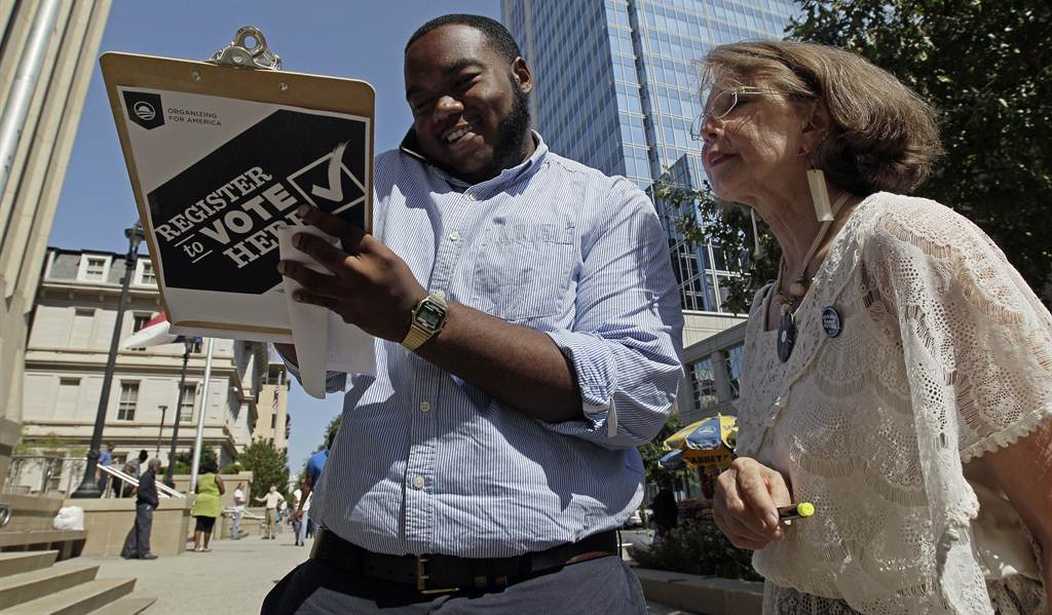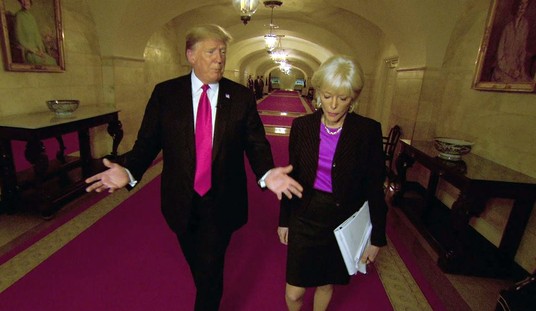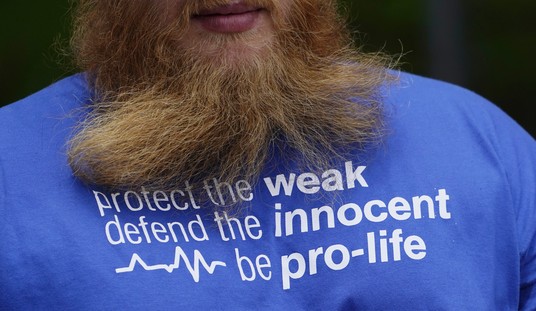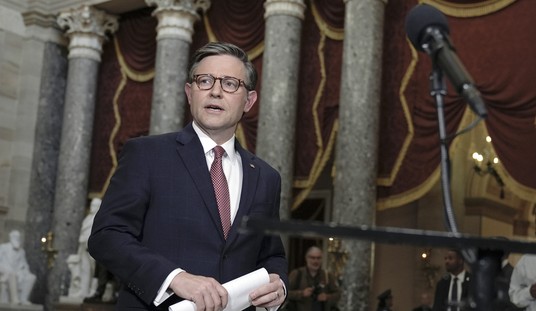In the May issue of Townhall Magazine, where this article originally appeared, Patrick Ruffini gives a report from the front lines on how both parties are using the latest technological tools at the ballot box.
In 2004, AFL-CIO political director Michael Podhorzer decided to conduct an experiment. He gathered more than 50 Democratic political consultants, placed three different mailers in front of them, and asked them which they thought would be most effective.
In such an exercise, you might think that the best minds in the industry would coalesce around a favorite. But something surprising happened: No one piece was ever the clear favorite. The group always split nearly evenly between all of them. And when the pieces were tested with voters, no consultant was ever consistently right about which would perform best. The experts’ odds of being right were no better than random.
Gurus vs Data
As Podhorzer told journalist Sasha Issenberg in The Victory Lab, the gut instinct of a few trusted “gurus” was no match for actual data. “And that just reinforced my belief that this empirical approach was far better than a guru approach where someone came in and said ‘This is the piece you had to send’ because of some theory they had about the election or the candidates or how human beings think,” said Podhorzer.
In 2012, President Obama’s campaign would play a similar game when deciding which email to send to their list of 16 million supporters. Their email team would draft up between 12 and 18 variations of an email to test, and an office pool was held to predict which would perform best. The results came back similar to the Podhorzer experiment. No one, not even the team’s most experienced members, could consistently predict which version would raise the most money. “We basically found our guts were worthless,” one of them confessed at a post- election gathering. The fact that their “experts” couldn’t reliably produce good results didn’t matter; the data saved them.
The digital revolution in politics is often talked about in terms of bright shiny objects. First, it was blogs. Then YouTube, MySpace, Facebook, Twitter, Tumblr, Reddit, and memes.
These trends exist largely on the surface. What lies beneath them is a sea of data, produced online and off, about the things we like, what we click, and the issues that are likely to inspire us to take action for a political candidate or cause.
If the political consultant class produced results that were no better than a random guess, the ability to collect and interpret data promised something more than that. It suggested certainty about whether someone would vote, who they would vote for, and how to persuade them.
Done right, this insight would yield a permanent electoral advantage to the side that embraced it best. Until very recently, it looked as though Republicans might not even bother competing.
Democrat Dominance
The Democratic advantage in the use of data and digital tools did not emerge in a vacuum. Like Republicans today, Democrats started at a deficit, both electorally and technologically. In the 2004 election, Democrats convinced themselves that a wartime president, George W. Bush, could be beaten. Anti-war fervor fueled the primary candidacy of Howard Dean, who attracted a cadre of young, tech-savvy progressives to build a vast online community that would propel Dean to the top tier of the Democratic field. His candidacy would eventually collapse, but the campaign brought together a group of tech-savvy data nerds who would go on to play a role in Obama’s two victories.
The early tech movement in the Democratic Party was fueled by a sense of rebellion. The lefty netroots were part of a revolt against “accommodationist” Democrats who had voted for the Iraq War and against political consultants who used the same cookie-cutter campaigns over and over again. This revolt against the party establishment wasn’t limited to policy, but extended to technology too.
Under now-Gov. Terry McAuliffe, then-Democratic National Committee chairman, the party was playing catch up to the Republican National Committee’s decade long lead in building a national voter file. McAuliffe’s solution (dubbed “Demzilla”) left much to be desired. State party after state party rallied around an alternate system, known as “the VAN” (short for the Voter Activation Network) that allowed a candidate for governor, U.S. Senate, or county commissioner in the same state to share the same voter data.
The impulse in the Democratic Party of the mid-2000s was not unlike that behind the Tea Party today, but with a significant focus on technology and the mechanics behind running successful political campaigns.
After their defeat in 2004, the Left and the labor movement also started new institutions designed to revolutionize the way Democrats campaigned for office. There was the New Organizing Institute, which focused on training progressives in the fundamentals of running digitally-focused campaigns. The Analyst Institute, founded by Podhorzer, aimed to prove with scientific certainty which messages and mediums moved voters, sharing this knowledge with all on the Left. Catalist, founded by Clinton confidant Harold Ickes, was started as a political data consortium enabling environmental groups, labor unions, and Democratic campaigns to share the same information about a voter.
This restlessness for change came at a time when the Democratic Party was falling behind the GOP in grassroots campaigning. The Republicans had faced an existential crisis after the 2000 election, where a 3-point pre-election lead turned into a nail-biting 36-day Florida recount. Leading into 2004, the Bush operation realized that dominance in the “air war” (a barrage of last-minute TV ads) wasn’t enough. It stepped up its ground game, implementing the “72 Hour” program to flood swing states with volunteers right before an election. Layered on top of this was the first truly national voter file, enhanced with “microtargeting” (the process of using surveys and consumer information to predict how an individual would vote) along with online tools that allowed people to organize others in their neighborhoods.
It was 2007 when the Democratic comeback began to bear fruit. Howard Dean had become DNC Chairman, and that year made the user-friendly VAN the national voter file after 47 states had adopted it. It remains the core tool Democrats use to access the voter file, with 250,000 authorized users in 2012. At the same time, the Democratic nomination race was just getting underway, and Obama intuitively understood that online organizing would be one of the main strategic drivers of his upset win over Hillary Clinton. Obama immediately began posting huge online fundraising numbers, and fielded a campaign social net- working website that would eventually grow to 2 million members.
Republicans Fall Apart
Just as Democrats were waking up, Republicans began unlearning the lessons of the Bush campaigns, and failed to perceive how campaigns had changed in the age of the Internet. Investment in the party’s flagship voter data platform, Voter Vault, slowed down to a point where Republican precinct walkers could do less with the help of technology in 2012 than they could in 2006. The 2008 Republican field focused on raising astounding amounts of money from big donors and almost immediately spending it, and John McCain’s campaign went broke in the process. McCain’s re-emergence as the nominee with virtually no resources was a testament to a fast-moving, topsy-turvy media culture partly fueled by the Internet. But he was unable to capitalize on it. The haphazard McCain effort had fewer staff members devoted to the digital campaign than Bush four years earlier, while Obama’s digital team numbered almost 100.
With Obama’s election, the techies went from being outsiders to insiders in the new Democratic Party. When it came time to re-elect Obama, the Democrats had a nearly decade-long legacy of raising phenomenal sums of money online, a well- honed voter database, and a wealth of technical talent.
Meanwhile, Republican comeback efforts proceeded in fits and starts. The RNC’s financial collapse under Michael Steele and the need to dig out of $20 million in debt halted investment in a digital and data program. At the same time, Republicans won the 2010 elections despite these hiccups, creating a sense that a business-as-usual campaign could beat Obama in 2012.
At Least One Obama Investment Paid Off
In Obama’s Chicago headquarters, the ranks of digital marketers, developers, and analysts swelled to 300. On the campaign’s newest frontier, data analytics, Obama invested nearly 10 times as much. In the end, they would raise $700 million online, and put nearly 16,000 staff into the field, managing 10,000 neighborhood level volunteer operations in swing states.
It is very possible that nothing Mitt Romney could have done would have won the 2012 election. Obama led consistently by a small amount throughout the campaign and the economy was limping along just enough to make him the favorite. It was also true that Obama outperformed the polls in nearly every swing state, meaning that his field and data efforts, while they did not win him the election, likely increased his margin.
Republican pre-election optimism about defeating Obama gave way to post-election introspection. “Our challenge is less of a technology problem and more of a culture problem,” read the RNC’s post-election autopsy. “We need to strive for an environment of intellectual curiosity, data, research, and testing to ensure that our programs are working.” In effect, the GOP was now confronting the same issue that Podhorzer had laid out a decade earlier: the “experts” who traditionally run campaigns were flying blind. Instead, the GOP needed to embrace a culture of testing and measuring everything they did.
The Republicans Strike Back
The 2014 midterms will be the first major test of the GOP’s post-2012 reset. At places like the RNC, and the Senate and House campaign committees, the shift has been dramatic. Immediately after the 2012 election, the National Republican Congressional Committee announced it was tripling its digital staff. The RNC hired a chief technology officer from Facebook and a chief data officer from LinkedIn, and relaunched its digital effort as Para Bellum Labs, which it bills as a “unique startup incubated within the Republican National Committee... building the best political data engineering team in the world.”
Nor do Republicans seem to be neglecting the other important part of Obama’s success, building a vast network of trained staff and volunteers who could take his message into every community. The National Republican Senatorial Committee built an academy to train campaign staff in battleground Senate races. And the GOP counts 12,000 precinct leaders for the 2014 election so far, with a 50-state field operation that got started a full year before GOP campaigns normally do.
An Early Victory in Florida
Republicans point to their victory in the hotly contested special election for Florida’s 13th district as an early harbinger of success. Going into Election Day, Republican David Jolly had no more than a 31 percent chance of winning, according to public polling data. In contrast to recent years, where Republicans have underperformed in special elections, the party was helped by new technology tools that made the task of targeting voters easier than it has been in the past.
Dynamo, the party’s API (short for application programming interface) lets outside apps and vendors interface directly with the party’s data. A control panel shares insights on voter registration and early voting. No longer are Republicans relying exclusively on spreadsheets, a distinctly 20th century technology, to share data.
“To be honest about the Republican ecosystem, most of the technology vendors were political people who played the most video games in college,” observed Andy Barkett, the RNC’s CTO, last summer. “Right? They weren’t necessarily real technologists.”
His job? “To fill in that real hard core technologist gap.”
Innovate or Die
Whether the party succeeds in closing that gap will depend on whether they are able to recruit and retain enough of the right talent by 2016. This is not purely a question of plucking engineers and data scientists out of left-leaning Silicon Valley. The Obama campaign recruited from the Bay Area, but was driven first and foremost by a class of savvy operatives who understood how technology could change political behavior. And it cultivated hundreds if not thousands of them. Much depends on whether Republicans can now do the same.
Heading into 2016, Republicans must also work to avoid the same mistake they made in 2010, where an Obamacare-fueled midterm victory made them too cocky about 2012. If she runs, Hillary Clinton is likely to run as the virtual incumbent in 2016, and amass considerable technical and data resources within her campaign before the primaries are over. Republicans must solve the problem they faced in 2012, where a bruising primary meant the GOP nominee had little infrastructure heading into the fall campaign. Rather than heading for a repeat of 2012, the GOP should study the Obama 2008 model, where a scrappier Obama operation built its digital assets steadily throughout the primary and was able to dominate the general election. Party resources will be important, but ultimately, Republican candidates in 2016 must invest in controlling their own digital destiny.
It’s true that technology alone doesn’t dictate who wins elections. But political efforts that don’t adapt to new technological realities are also unlikely to be innovative when it comes to their larger strategy. Technical competence is usually a sign of competence in other areas too.
Republicans face an electorate that has fundamentally changed over the last decade, both demographically and in how they engage with politics. The number of people who primarily use a landline phone plummeted from 40 percent in 2003 to less than 10 percent in 2013. Last year, for the first time, the time Americans spent on digital media eclipsed the time they spent watching TV.
Traditional forms of reaching voters are steadily eroding, and politics needs to catch up. For the GOP, and anyone looking to win hearts and minds in the 21st century, the imperative is clear: innovate or die.
Patrick Ruffini is a founding partner of Engage, LLC, a Washington, D.C.-based political media firm.
























Join the conversation as a VIP Member